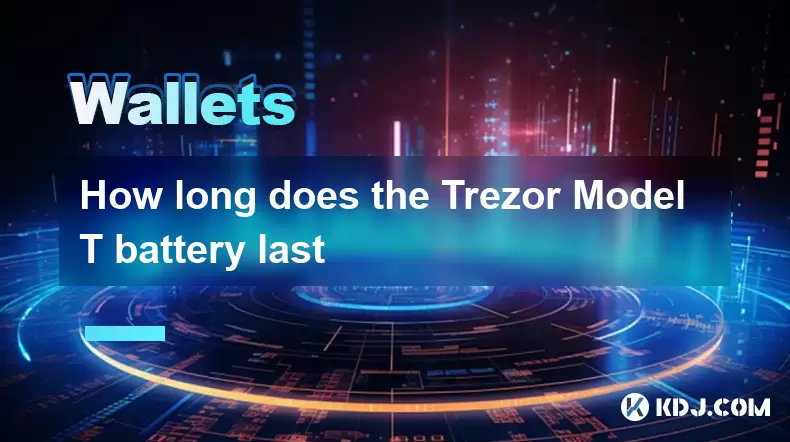-
 Bitcoin
Bitcoin $116,413.6316
4.86% -
 Ethereum
Ethereum $2,962.3587
7.88% -
 Tether USDt
Tether USDt $1.0001
-0.03% -
 XRP
XRP $2.5463
5.77% -
 BNB
BNB $683.8102
2.44% -
 Solana
Solana $162.9791
3.86% -
 USDC
USDC $0.9997
-0.03% -
 Dogecoin
Dogecoin $0.1914
5.76% -
 TRON
TRON $0.2924
0.89% -
 Cardano
Cardano $0.6703
7.88% -
 Hyperliquid
Hyperliquid $43.7028
7.30% -
 Sui
Sui $3.4587
13.54% -
 Bitcoin Cash
Bitcoin Cash $518.1126
1.86% -
 Chainlink
Chainlink $15.0839
5.67% -
 Stellar
Stellar $0.3042
5.75% -
 Avalanche
Avalanche $20.4077
4.97% -
 UNUS SED LEO
UNUS SED LEO $9.0358
0.51% -
 Hedera
Hedera $0.1872
9.88% -
 Shiba Inu
Shiba Inu $0.0...01313
5.47% -
 Toncoin
Toncoin $2.9247
3.13% -
 Litecoin
Litecoin $94.4364
4.20% -
 Polkadot
Polkadot $3.8239
5.24% -
 Monero
Monero $327.9946
0.97% -
 Dai
Dai $0.9998
-0.03% -
 Ethena USDe
Ethena USDe $1.0005
-0.06% -
 Uniswap
Uniswap $8.4634
1.54% -
 Bitget Token
Bitget Token $4.5155
2.83% -
 Pepe
Pepe $0.0...01210
8.42% -
 Aave
Aave $311.6595
3.63% -
 Pi
Pi $0.5012
6.68%
Ledger vs Coldcard for Bitcoin storage
Both Ledger and Coldcard offer secure Bitcoin storage, with Ledger focusing on user-friendly multi-currency support and Coldcard prioritizing air-gapped, Bitcoin-only security.
Jul 10, 2025 at 11:01 pm

Understanding Hardware Wallets: Ledger and Coldcard
When it comes to securing Bitcoin, choosing the right storage method is crucial. Among the most trusted solutions are hardware wallets, which offer offline protection against online threats. Two prominent names in this space are Ledger and Coldcard. Each provides a unique set of features tailored for different user needs.
Hardware wallets store private keys on a secure chip, making them inaccessible to remote attackers. Both Ledger and Coldcard fall into this category, but they differ significantly in terms of design philosophy, supported cryptocurrencies, and usability.
Security Features Compared
One of the primary concerns when storing Bitcoin is security. Both Ledger and Coldcard implement robust mechanisms to protect private keys, but their approaches vary.
- Ledger devices, such as the Nano S Plus or Nano X, utilize a Secure Element (SE), a tamper-resistant chip commonly used in credit cards and passports. This ensures that even if the device is compromised physically, extracting the seed remains extremely difficult.
- Coldcard, on the other hand, uses an open-source firmware model with a focus on air-gapped operations. It does not connect to any network unless explicitly authorized by the user, reducing attack surfaces significantly. The use of MicroSD card-based transfers further isolates the device from potential online vulnerabilities.
Each wallet offers PIN protection, and both support BIP39 mnemonic phrases for recovery. However, Coldcard emphasizes physical durability and minimal external dependencies, while Ledger integrates more modern security chips and Bluetooth connectivity in some models.
User Interface and Usability Differences
The interface and ease of use can be a deciding factor for many users, especially those new to Bitcoin storage.
- Ledger devices come with a screen and two buttons, allowing users to navigate menus and confirm transactions directly on the device. They also integrate with Ledger Live, a desktop and mobile application that simplifies sending, receiving, and managing assets across multiple blockchains.
- Coldcard has a monochrome screen with a more basic menu system. It doesn’t have a companion app like Ledger Live. Instead, users interact with it through QR codes or MicroSD cards when used with software like Electrum or Sparrow Wallet. While less intuitive for beginners, this setup enhances security by avoiding direct computer or phone connections during critical operations.
Coldcard’s approach caters to advanced users who prioritize air-gapped verification, whereas Ledger appeals to those who want user-friendly interfaces and multi-currency support.
Supported Cryptocurrencies and Integration
For users who hold multiple cryptocurrencies, the range of supported coins becomes an important consideration.
- Ledger supports over 1,800 cryptocurrencies, including major ones like Ethereum, Litecoin, and Solana. Its integration with third-party apps via Ledger Live allows seamless management of diverse portfolios.
- Coldcard is Bitcoin-only. This limitation is intentional, as the developers believe focusing solely on Bitcoin enhances security and eliminates unnecessary risks introduced by supporting other blockchains.
Additionally, Coldcard works well with multi-signature setups, making it ideal for institutional or high-security personal use. In contrast, Ledger supports multisig through third-party services like Caravan or Electrum, but native support is limited.
Price and Availability
Cost plays a significant role in the decision-making process for many users.
- Ledger Nano S Plus typically retails for around $79, while the Nano X, which includes Bluetooth functionality, costs about $149.
- Coldcard Mk4 is priced at $129, slightly higher than Ledger’s entry-level option. However, this reflects its specialized use case and enhanced security features tailored for serious Bitcoin holders.
Both wallets are widely available through official websites and authorized resellers. Purchasing from trusted sources is essential to avoid counterfeit products that could compromise security.
Recovery and Backup Options
A critical aspect of using any hardware wallet is ensuring that funds can be recovered in case of loss, damage, or theft.
- Both Ledger and Coldcard provide recovery phrases consisting of 12 or 24 words based on BIP39 standards. These phrases must be stored securely, ideally on metal backups like Billfodl or Cryptosteel, to prevent degradation or physical damage.
- Coldcard offers an additional layer of security with encrypted SD card backups, allowing users to store encrypted versions of their keys without exposing them to online environments.
- Ledger users can optionally enable passphrase encryption for added privacy, creating multiple hidden wallets under the same recovery phrase.
It's vital to test the recovery process before relying on it in an emergency. Users should never store recovery phrases digitally or share them with anyone.
Frequently Asked Questions
Q: Can I use Coldcard with mobile devices?
A: Coldcard does not natively connect to mobile devices. However, it can interact with compatible wallet software like Sparrow Wallet through QR code scanning or MicroSD card transfers.
Q: Does Ledger support multisignature wallets out of the box?
A: Ledger does not offer native multisig support but can work with third-party platforms like Caravan or Electrum to create and manage multisig setups.
Q: Is Coldcard suitable for beginners?
A: While Coldcard is highly secure, its interface and workflow are more complex than Ledger’s. Beginners may find it challenging without prior knowledge of Bitcoin wallet operations.
Q: Are there open-source firmware options for Ledger devices?
A: No, Ledger’s firmware is closed-source. Coldcard, in contrast, uses fully open-source firmware, allowing for independent audits and transparency.
Disclaimer:info@kdj.com
The information provided is not trading advice. kdj.com does not assume any responsibility for any investments made based on the information provided in this article. Cryptocurrencies are highly volatile and it is highly recommended that you invest with caution after thorough research!
If you believe that the content used on this website infringes your copyright, please contact us immediately (info@kdj.com) and we will delete it promptly.
- Coinbase & Perplexity: AI-Powered Crypto Insights with Live Data
- 2025-07-11 04:50:13
- Coinbase, Perplexity AI, and Crypto Prices: Navigating the AI-Crypto Convergence
- 2025-07-11 04:50:13
- XRP, Axelar, Interoperability: A New Era for Cross-Chain DeFi
- 2025-07-11 02:30:12
- NEAR Protocol Price Analysis: Navigating July 2025's Trends
- 2025-07-11 03:30:13
- Tokenization: Navigating Complexity and Implementing Seamless Payments
- 2025-07-11 03:30:13
- Bitcoin's Record-Breaking Run: Decoding the Key Factors
- 2025-07-11 04:10:13
Related knowledge

How to add Ethereum L2 networks like Arbitrum to Trezor
Jul 11,2025 at 12:36am
What Is Ethereum L2 and Why Add It to Trezor?Ethereum Layer 2 (L2) networks, such as Arbitrum, are scaling solutions designed to reduce congestion on ...

How to find a specific receiving address on my Trezor
Jul 09,2025 at 10:36pm
Understanding the Purpose of a Receiving AddressA receiving address is a unique identifier used in blockchain networks to receive cryptocurrency. Each...

How to connect Trezor to Rabby wallet
Jul 09,2025 at 05:49am
What Is Trezor and Rabby Wallet?Trezor is a hardware wallet developed by SatoshiLabs that allows users to securely store their cryptocurrency assets o...

How long does the Trezor Model T battery last
Jul 10,2025 at 11:35pm
Understanding the Battery Design of Trezor Model TThe Trezor Model T is a hardware wallet developed by SatoshiLabs, designed to securely store cryptoc...

Is it safe to use Trezor on a public computer
Jul 09,2025 at 08:56pm
Understanding the Risks of Using Trezor on a Public ComputerUsing a Trezor hardware wallet is generally considered one of the most secure methods for ...

What happens if I forget my Trezor passphrase
Jul 09,2025 at 03:15am
Understanding the Role of a Trezor PassphraseIf you use a Trezor hardware wallet, you may have set up a passphrase as an extra layer of security beyon...

How to add Ethereum L2 networks like Arbitrum to Trezor
Jul 11,2025 at 12:36am
What Is Ethereum L2 and Why Add It to Trezor?Ethereum Layer 2 (L2) networks, such as Arbitrum, are scaling solutions designed to reduce congestion on ...

How to find a specific receiving address on my Trezor
Jul 09,2025 at 10:36pm
Understanding the Purpose of a Receiving AddressA receiving address is a unique identifier used in blockchain networks to receive cryptocurrency. Each...

How to connect Trezor to Rabby wallet
Jul 09,2025 at 05:49am
What Is Trezor and Rabby Wallet?Trezor is a hardware wallet developed by SatoshiLabs that allows users to securely store their cryptocurrency assets o...

How long does the Trezor Model T battery last
Jul 10,2025 at 11:35pm
Understanding the Battery Design of Trezor Model TThe Trezor Model T is a hardware wallet developed by SatoshiLabs, designed to securely store cryptoc...

Is it safe to use Trezor on a public computer
Jul 09,2025 at 08:56pm
Understanding the Risks of Using Trezor on a Public ComputerUsing a Trezor hardware wallet is generally considered one of the most secure methods for ...

What happens if I forget my Trezor passphrase
Jul 09,2025 at 03:15am
Understanding the Role of a Trezor PassphraseIf you use a Trezor hardware wallet, you may have set up a passphrase as an extra layer of security beyon...
See all articles


























![Bitcoin is about to plummet and get 9-7W long-term short orders [Chainblade’s latest market BTC technical analysis] July 10, 2025 Bitcoin is about to plummet and get 9-7W long-term short orders [Chainblade’s latest market BTC technical analysis] July 10, 2025](/uploads/2025/07/10/cryptocurrencies-news/videos/bitcoin-plummet-w-term-short-chainblade-market-btc-technical-analysis-july/686f8f4c58e52_image_120_90.webp)






























































